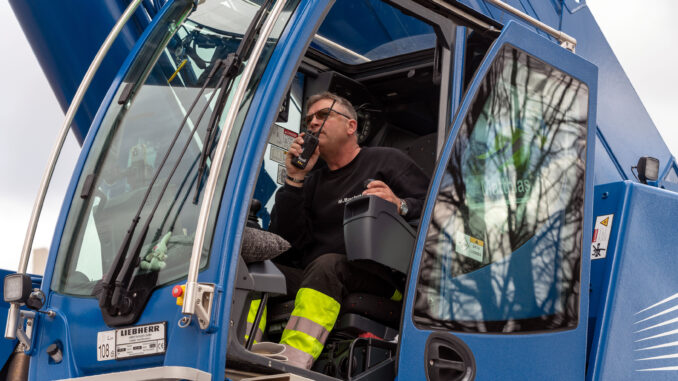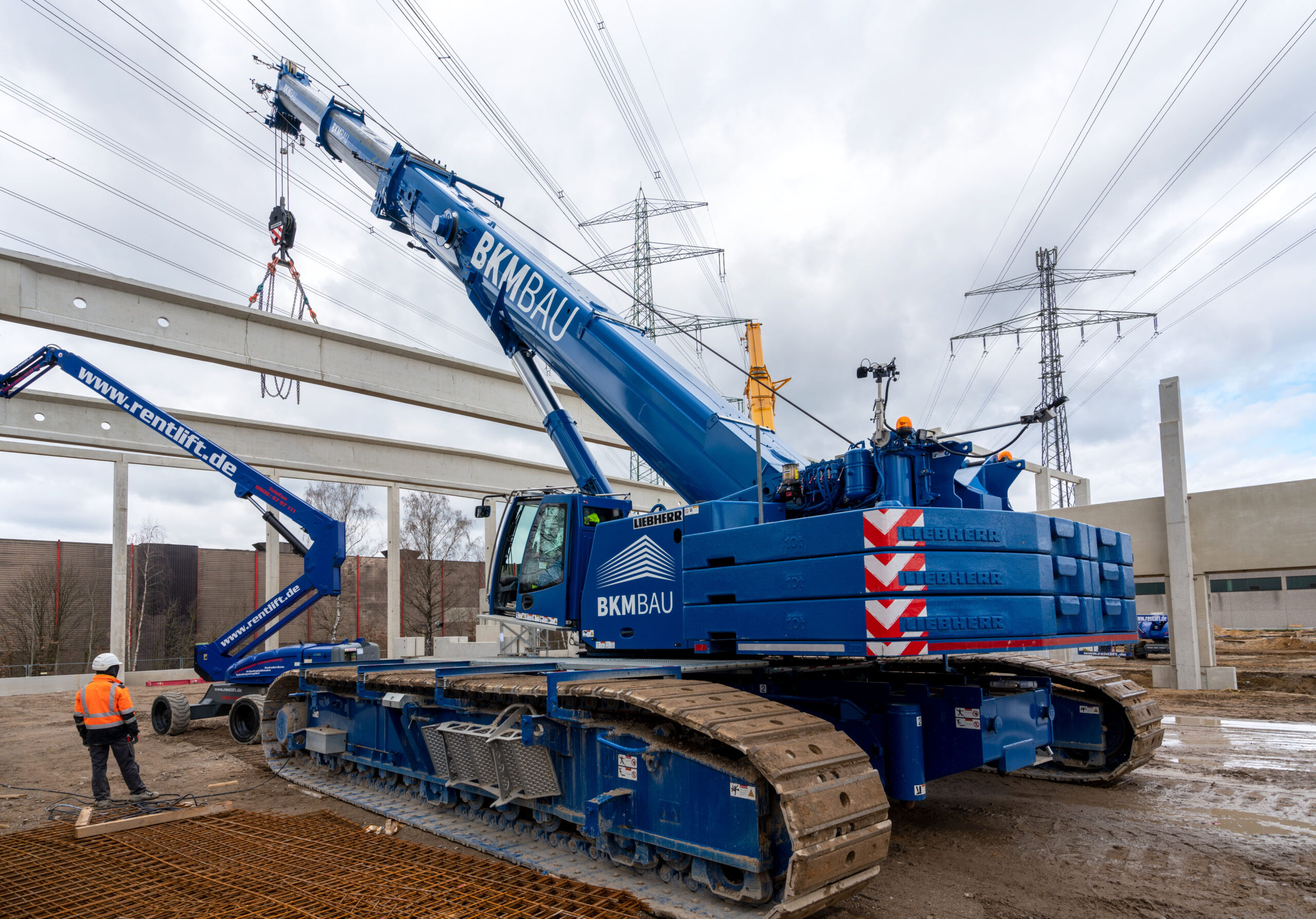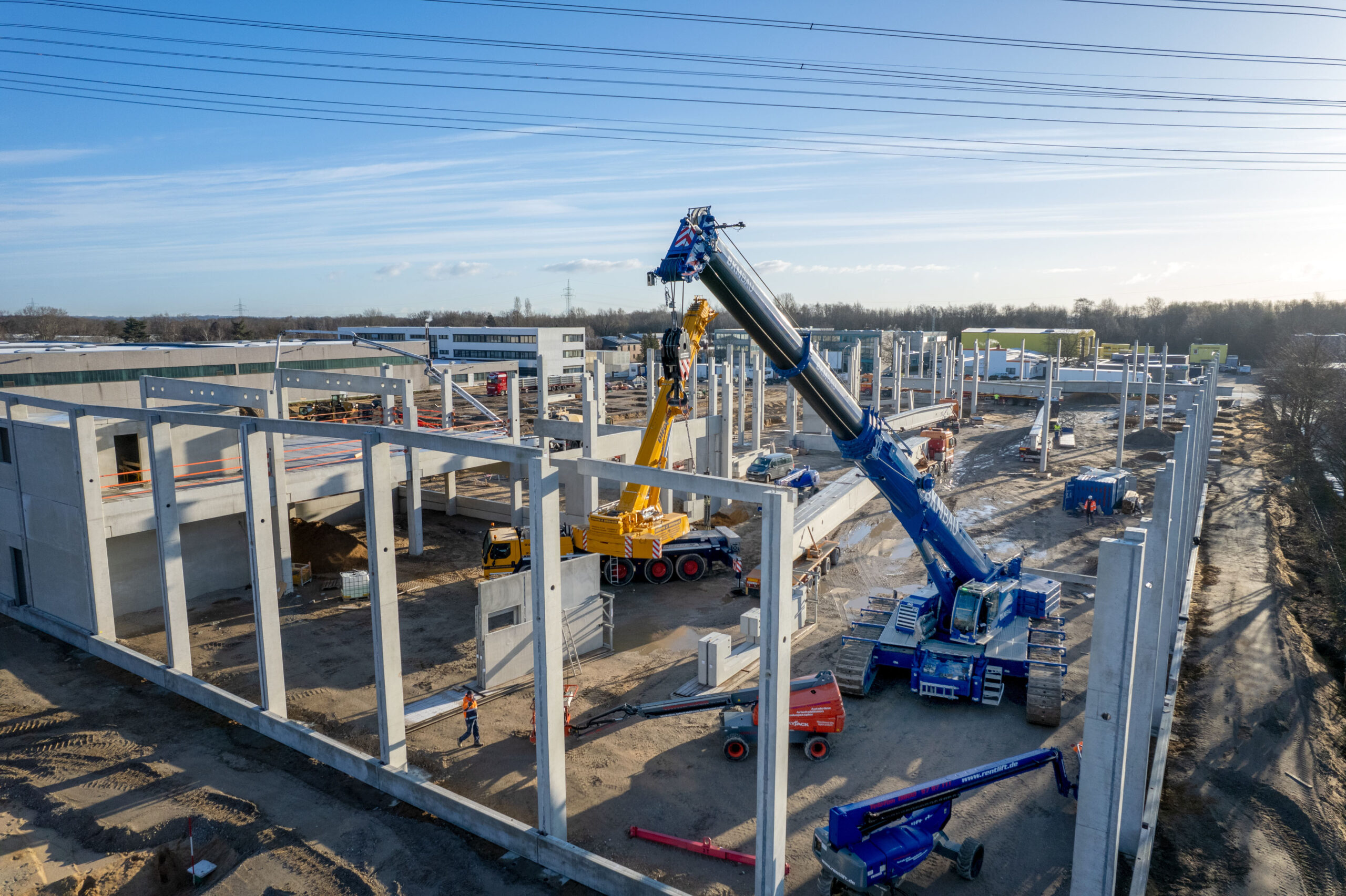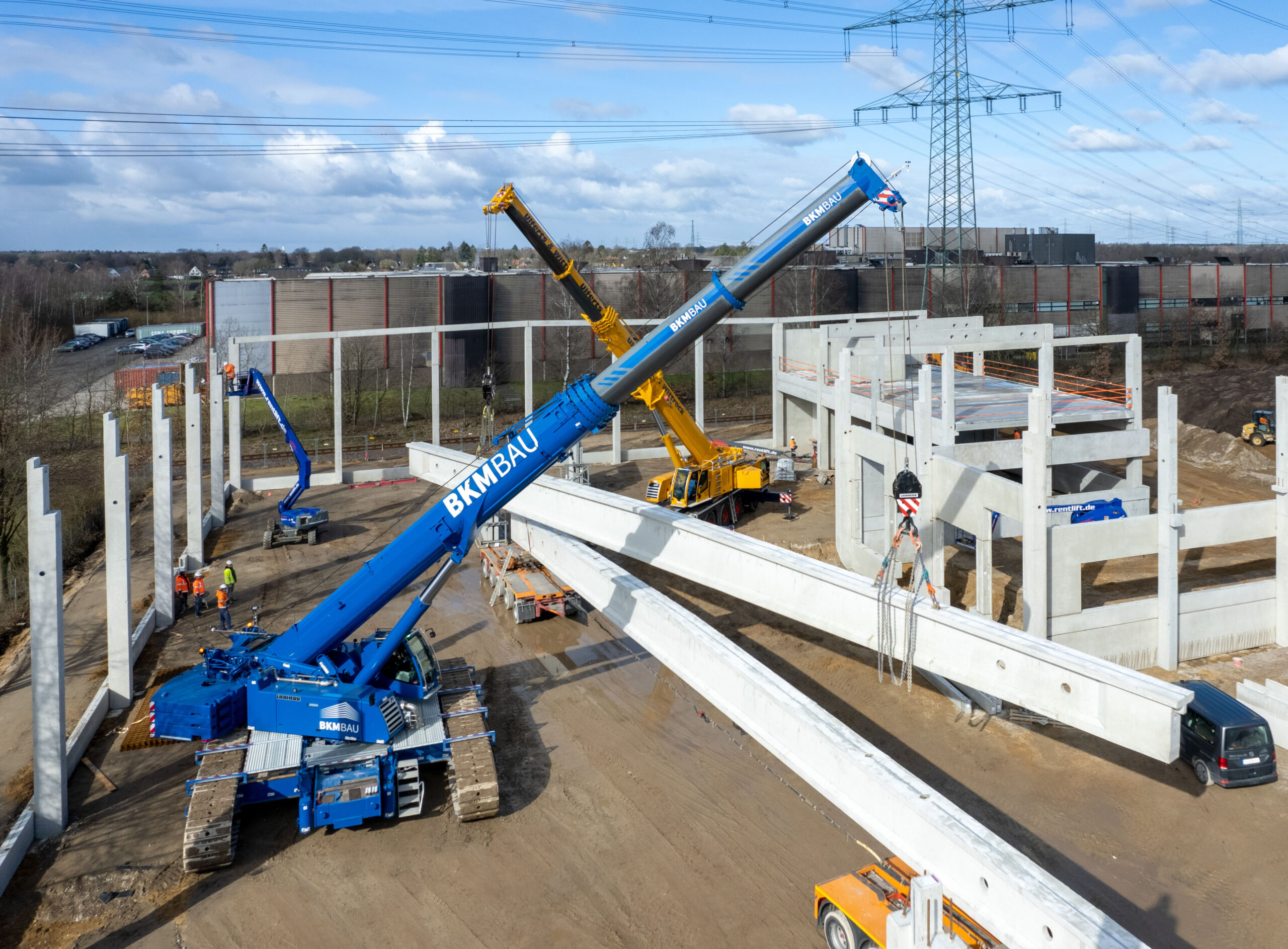
- BKM’s new Liebherr LTR 1220 increases the speed of prefab assembly
- The LTR 1220 is by far the most powerful crawler crane with a telescopic boom on the market
- Difficult hall construction cleverly mastered close under high-voltage power lines
In the summer of 2022, BKM Bau Beteiligungs-GmbH (BKM), a company specializing in precast concrete construction and assembly, upgraded its crane fleet with a telescopic boom crawler crane for the first time. It chose to buy the most powerful crane type that the market currently has to offer in this segment: the LTR 1220 from Liebherr. With its maximum load moment of 672 tonnes per meter, it leaves the competition far behind. The same goes for the achievable lifting height of 101 meters with the use of lattice jibs on the 60-meter boom. After one year in permanent service and five completed projects with the newcomer, BKM’s assembly manager Boris Cordes is thoroughly impressed.

Ehingen (Donau) (Germany) – As a supplier of precast concrete buildings, the company BKM produces reinforced concrete elements at several locations. Until now, the company, based in Nienburg between Hanover and Bremen, has erected warehouses or office buildings for its customers using mobile cranes. For the last year, however, an additional telescopic boom crawler crane from Liebherr has been handling its orders – with considerable success. “With our new LTR 1220, we are significantly faster than before. By at least 20 percent,” explains Boris Cordes. As the assembly manager at BKM (alongside his other responsibilities), he supervised the company’s most recent large project involving the crawler crane in Norderstedt near Hamburg.
Just a few meters between pulley head and power line
A warehouse building with 11,000 square meters of floor space had to be constructed in the north of Germany. The special thing – or rather, the particularly difficult thing – about this project was that parts of the concrete hall had to be built directly underneath and at a short distance from two large high-voltage power lines. At certain times the crane and fitters only had a few metres of usable height above the structure because a minimum safety distance from the sagging cables had to be maintained. As with all crane types produced at the Liebherr factory in Ehingen, the LICCON control system of the LTR 1220 makes it possible to define the limits for the work area as standard. This prevents the telescopic section from accidentally extending too far or the boom from luffing up.

The LTR 1220, by far the most powerful machine on the market for crawler cranes with telescopic booms, was able to demonstrate not only its considerable power but also its other capabilities in Norderstedt. The assembly of 36-meter-long roof trusses under the power lines proved to be the main sticking point on the construction site. Since all the pillars for the hall had already been sunk at the start of the project, the girders could not be delivered parallel to the installation direction. The crawler crane, which remained mobile under load, had the task of grabbing the far end of the 40-tonne elements and moving the load under the overhead line. On the other side, a Liebherr mobile crane had attached and then swung the heavy reinforced-concrete beams into the 90-degree-offset assembly position. “We wouldn’t have been able to do that with a mobile crane under the power lines,” says Cordes.

990 operating hours without problems
Matthias Bachmann, who drives the LTR 1220 – now painted in the corporate blue of BKM – is full of praise for his new machine: “Control, camera system, mobility, precision… everything is really top-notch,” he enthuses. And in terms of lifting power, the state-of-the-art crane leaves nothing to be desired for its satisfied operator. “A 60-tonne girder was the heaviest thing I have moved with the LTR so far. And in the 990 operating hours, we didn’t have a single standstill – I think that’s excellent.” This is music to the ears of assembly manager Boris Cordes, who adds: “Buying the LTR 1220 was the best decision we could have made. The crane is simply outstanding.”









































